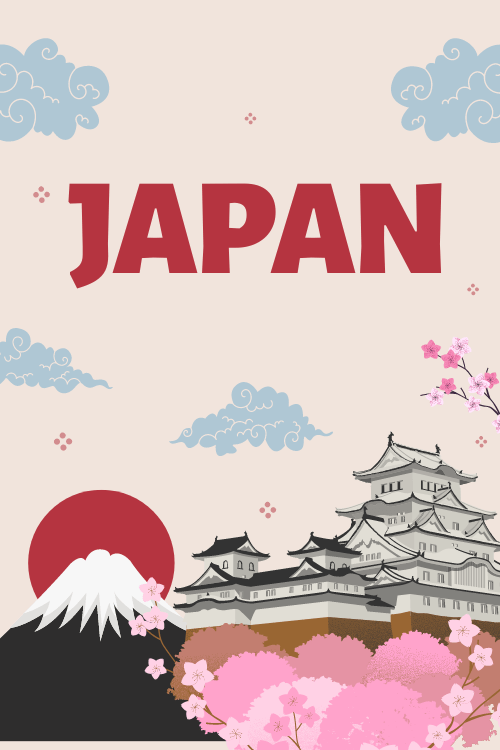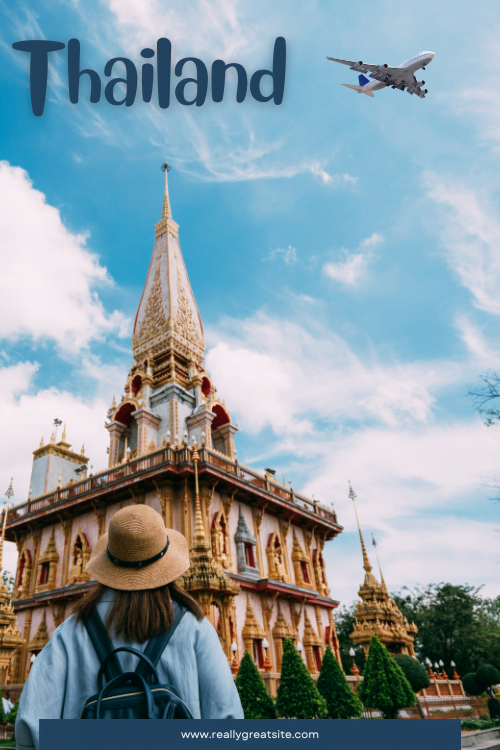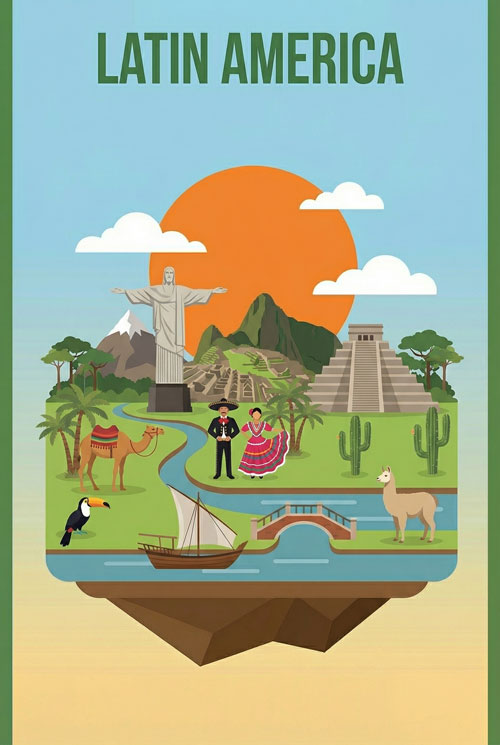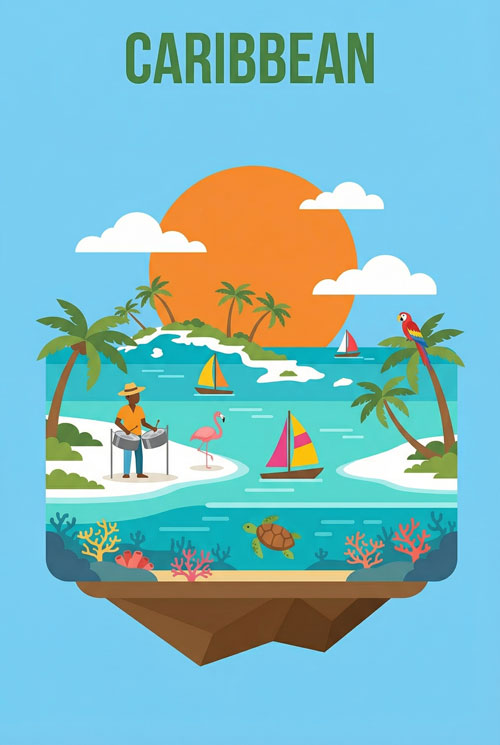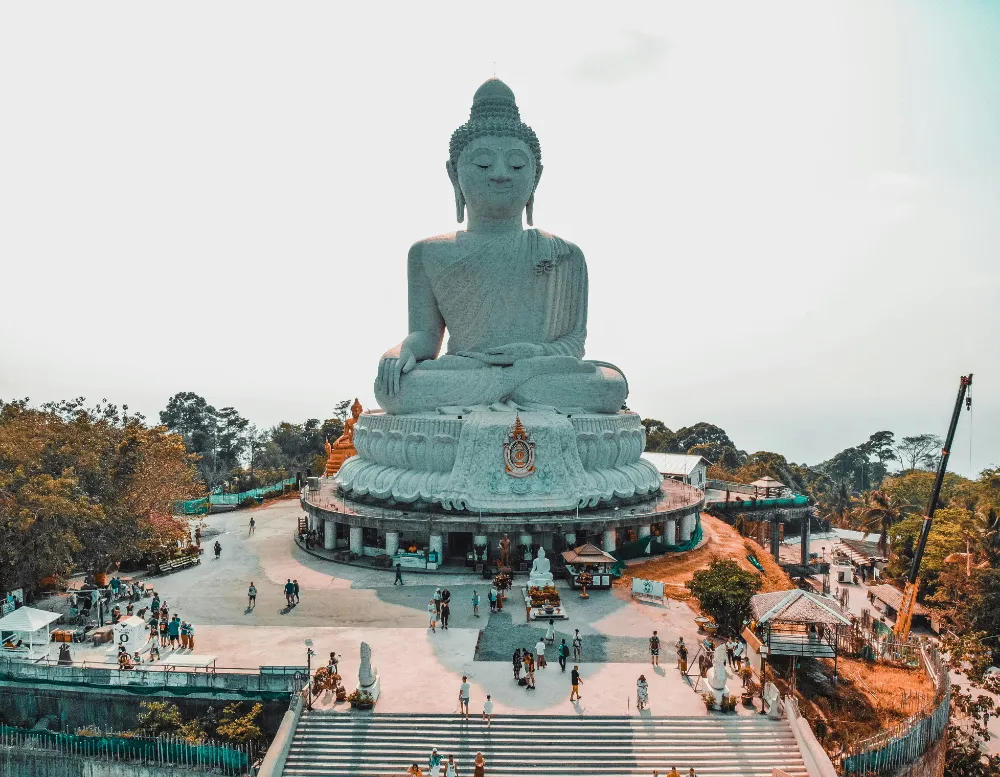Best Time To Visit, eSIM Thailand
Best Time to Visit Phuket: Full Guide & Quiz
Phuket is a fantastic choice for a getaway, and you’re likely wondering when the absolute best time to go is.
The truth is, Phuket offers something special all year round. However, the ideal time for your trip really depends on what you’re looking for. If you dream of perfect beach weather with sunny skies and calm seas, November to February is often your best bet. This is when conditions are glorious for swimming and exploring.
Perhaps you’re looking to travel when it’s a bit quieter and more budget-friendly?
Then, the months from May to October could be perfect for you. You’ll find lower prices and fewer crowds, though you should expect some rain. Love experiencing local culture?
Phuket hosts vibrant festivals like Songkran (Thai New Year) in April, which is an unforgettable water-filled celebration. This guide will walk you through everything, helping you pick the time that’s just right for your dream Phuket adventure.
Want a quick answer to when you should visit Phuket? Try our quick quiz…
Find Your Perfect Phuket Getaway!
Answer a few questions to discover the best time for your dream trip to this Thai paradise.
1. What kind of holiday atmosphere are you dreaming of for Phuket?
2. How do you feel about crowds?
3. What’s your ideal weather for exploring Phuket?
4. Which Phuket experiences are high on your list?
Select up to 2 that are most important.
5. How important is budget in your planning?
Your Recommended Phuket Travel Time:
Stay Connected in Thailand with esim4.com!

Don’t let roaming charges interrupt your Phuket adventure. Get affordable and convenient eSIM data plans for Thailand from esim4.com. Easy to set up, stay connected from the moment you land!
Explore Thailand eSIM PlansUnderstanding Phuket’s Weather: Sunshine and Showers
Phuket has a tropical monsoon climate. This means it doesn’t have four distinct seasons like some other places. Instead, you’ll find two main seasons: a dry season and a rainy season. These are shaped by monsoon winds. One brings dry, cooler air, and the other brings moisture. You’ll find that even during the rainy times, the island often gets shelter from the heaviest downpours, especially during the cooler parts of the year.
Phuket’s Main Seasons: What to Expect
The year in Phuket can be split into three general periods. You have the cool and dry season, the hot season, and the rainy (or green) season. It’s good to remember that these seasons can blend into each other a bit. The weather can also change a little from one year to the next.
Generally, the cool and dry time runs from November to about February or even April. This is when many people love to visit. Then comes the hot season, usually from March to May. Finally, the rainy season typically starts around May or June and goes through October. December to February is often called the “peak season” because it’s so popular.
Let’s look at what each season offers. The cool and dry season, from November to February, usually has temperatures between 23∘C and 32∘C. Expect lots of sun, low humidity, and calm seas. This makes it wonderful for beach days and water activities. However, it’s also the busiest time with higher prices.
The hot season, from March to May, sees temperatures climb, sometimes from 28∘C up to 40∘C. It’s very sunny but can get quite humid, with more showers as May arrives. The Songkran festival in April is a huge highlight.
Then there’s the rainy or green season, from about June to October. Temperatures are still warm, around 25∘C to 34∘C. It’s humid with frequent rain, especially in September and October. But, this is when you’ll find the lowest prices and fewest people. The island also looks incredibly green and lush. It’s also the best time for surfing.
A Closer Look at Phuket’s Weather Each Month
Knowing the general seasons is helpful. But looking at each month can give you even more detail for planning.
January and February are peak months with fantastic weather, around 28∘C, little rain, and lots of sunshine. The sea is calm, perfect for boat trips. You might catch Chinese New Year celebrations too.
March sees temperatures rise to about 29∘C as the hot season begins. April gets even warmer and a bit more humid, with the amazing Songkran festival taking place.
May marks the start of the rainy season. You’ll see more rain, around 281mm on average, but also lower prices. June, July, and August continue with warm, humid weather and regular showers. These months are great for surfing as the waves pick up.
September is often the wettest month, with around 320mm of rain. This means fewer tourists. October sees the rain start to ease, and the unique Phuket Vegetarian Festival often happens around this time.
November is a wonderful transition month. The rains lessen, temperatures are pleasant (around 27∘C), and the cool, dry season begins. Loy Krathong, a beautiful festival of lights, is often in November. December brings beautiful weather, making it a peak time for Christmas and New Year holidays.
Remember, these are general patterns. Sometimes the seasons shift a little. Shoulder months like early May or late October can offer a mix of conditions and good value.
Enjoying Phuket’s Cool & Dry Season (November – April)
Many people feel the period from November to April is the absolute best time to be in Phuket. This is when you get that picture-perfect tropical weather. Think sunny skies, comfortable warmth, low humidity, and calm, sparkling seas. Within this window, December to February is often the busiest and most popular. November is lovely as it’s just after the rains, and March and April are a bit warmer but still very pleasant.
What the Weather is Really Like
During these months, especially from November to February, you can expect temperatures to be very comfortable. They usually hover between a pleasant 23∘C and 32∘C. There’s very little rain, and the humidity is low, which makes being outdoors a joy. The Andaman Sea is typically calm and clear. This means visibility is excellent for any water activities you have planned.
If you visit now, you’re almost guaranteed great weather. It’s perfect for lounging on the beach, swimming, eating outdoors, and exploring. But, this amazing weather means it’s popular. So, prices for hotels and flights will be at their highest. Famous beaches and sights will also have more people. It’s a really good idea to book your accommodation and any popular tours well ahead of time, maybe even months before, to get what you want and possibly better prices. The fantastic weather drives up demand, which affects prices and crowds. So, if you want these perfect conditions, be ready for the peak season buzz.
Fun Things to Do in the Cool Season
The wonderful weather means you can do almost anything you want. You can spend your days sunbathing and swimming at Phuket’s famous beaches. Patong, Kata, and Nai Harn are great choices. Freedom Beach is another beautiful spot to visit during this time.
The calm, clear water is ideal for all sorts of water sports. Try snorkeling or scuba diving. The Similan Islands, which are open during this season, have amazing underwater visibility. You can also go island hopping to places like the stunning Phi Phi Islands. Sailing and jet skiing are also popular.
Exploring the island is very comfortable with the pleasant temperatures. Visit viewpoints for incredible panoramic photos. Wander through the charming streets of Old Phuket Town. Discover natural wonders like Phang Nga Bay. If you enjoy hiking, places like Khao Phra Thaeo National Park offer enjoyable trails.
The island’s nightlife is also at its most exciting during this season. Areas like Patong’s Bangla Road are buzzing with energy.
Don’t Miss These Festivals
This time of year is also full of exciting cultural events. In November, you can see Loy Krathong. It’s a truly magical festival where people release small, candlelit floats onto the water. The sight is breathtaking. Also in November, Patong often hosts a lively Carnival with parades and entertainment.
December is all about Christmas and New Year’s Eve. Phuket celebrates with lots of enthusiasm. You’ll see festive decorations, special dinners at restaurants, fun beach parties, and amazing fireworks displays.
January often features the Phuket International Boat Show. This event showcases luxury yachts and everything related to the marine lifestyle.
Depending on the lunar calendar, Chinese New Year falls in January or February. It’s celebrated with vibrant dragon dances, exciting firecrackers, and colorful street parades, especially in Old Phuket Town.
In March, you might catch the Thao Thepkasattri-Thao Sri Suntorn Festival. This is an important local event that lasts for about two weeks. It includes cultural shows and sports, honoring Phuket’s historical heroines.
Weighing the Good and the Not-So-Good
The biggest advantage of visiting now is the consistently fantastic weather. It’s sunny, dry, and warm with low humidity. The sea is at its calmest, perfect for all water fun and boat trips. The atmosphere is lively with many events and festivals. All attractions and tours are open and running.
However, this is also when you’ll find the highest prices for hotels, flights, and some services. It’s the most crowded time, especially at popular beaches and sights. You really need to book your accommodation and any popular tours far in advance.
Smart Tips for Your Peak Season Trip
To get the most out of your visit during this busy time, a little planning helps. Book everything early. Try to secure your flights and hotel rooms several months before you travel. This is especially true if you’re coming for Christmas, New Year, or Chinese New Year.
When you visit popular spots like famous beaches or viewpoints, try to go early in the morning. This way, you can enjoy them before the biggest crowds arrive.
Think about exploring beyond the main tourist areas. You could visit quieter islands like Koh Yao Yai for a more peaceful day. Or, check out the less busy northern or eastern coasts of Phuket.
And, be sure to budget for higher overall costs. While the “peak season” is usually December to February, the whole dry season from November to April offers good weather. You might find that the shoulder months, like early November or late February/early March, give a slightly better balance. You could still get great weather but with slightly fewer people and prices that aren’t quite at their absolute peak.
Experiencing Phuket’s Hot Season (March – Mid-May)
From March to about the middle of May, Phuket starts to change. The cool, dry air gives way to more heat and humidity. This signals that the rainy season is on its way. This “hot season” means higher temperatures, but you’ll still get a lot of sunshine, especially at the start of this period. Some people call March and April a “moderate season” because, while it’s warmer, the main rains haven’t started yet.
What to Expect from the Weather
During these months, temperatures can really climb. They often range from 28∘C to 34∘C. On very hot days, it can even reach 36∘C or sometimes 40∘C. You’ll also notice the humidity going up. March and April are still mostly sunny. But as May gets closer, you’ll have a higher chance of short, strong rain showers.
For some people, the intense heat can make it uncomfortable to be outdoors doing a lot in the middle of the day. The sea is usually still good for swimming early in this season. Towards May, though, it can get a bit choppier as the winds start to change. You’ll generally find fewer tourists than in the peak cool season. This can mean you find better deals on places to stay.
Top Things to See and Do
Even with the heat, this season has some special attractions. The Songkran Festival in April is the absolute highlight. This is Thailand’s traditional New Year. The island turns into one giant, happy water fight! It’s a unique and very refreshing way to cool down. Patong Beach and Bangla Road are famous spots for these fun water celebrations.
To beat the midday heat, it’s best to plan beach visits or sightseeing for the cooler early morning or late afternoon hours. You can still enjoy swimming and snorkeling, which feel great in the heat, especially earlier in the season.
If you enjoy shopping, you might find the “Amazing Grand Sale” starting towards the end of this period, or in June. This event offers discounts in many shops. Sightseeing and shopping are often popular activities during this time.
For surfers, the later part of the hot season, especially April and May, can bring the first good waves. This signals the start of the surf season on the west coast as the winds change.
Key Festivals and Events
Songkran, from April 13th to 15th, is the biggest event. Many visitors come just for these exciting water celebrations. Also in April, you might find the Phuket Gay Pride & Festival. This is a lively, multi-day event with parades, parties, and cultural shows. It adds to April’s festive feel. The Thao Thepkasattri-Thao Sri Suntorn Festival in March is another important cultural event to look out for.
The Upsides and Downsides
A big plus is experiencing the unforgettable Songkran Festival. You’ll also generally find fewer crowds and lower prices compared to the peak cool season. There’s still plenty of sunshine, especially in March and April. And, the surf season starts to kick off towards May.
On the other hand, it can be extremely hot and humid. This might be uncomfortable if you’re sensitive to heat. There’s an increasing chance of rain showers, particularly in May. Some people might find the midday heat too much for doing a lot of outdoor activities.
Tips for a Comfortable Hot Season Trip
To enjoy your trip even with the heat, here are a few ideas. Drink lots of water all day long to stay hydrated. Sun protection is very important. Use a good sunscreen with high SPF, wear a hat, and sunglasses. Choose light, breathable clothes made from cotton or linen.
Plan your activities carefully. If you want to do something strenuous outdoors, do it in the cooler early morning or late afternoon. If you’re visiting in April for Songkran, get ready to get wet! It’s a good idea to protect your phone and camera in waterproof bags. Choose a place to stay that has good air-conditioning. A swimming pool is also a great way to cool off from the heat.
The hot season offers a different kind of Phuket experience. For many, the main reason to visit is the unique cultural fun of Songkran. They feel it’s worth dealing with the higher temperatures. If that’s you, April is definitely your “best time.” For others, the appeal is the shoulder season benefits. You get fewer crowds and better prices than the peak months, as long as you’re okay with warmer, more humid weather.
This “Invisible” SIM Card is Saving Ordinary Travellers Hundreds on International Trips
You see those travelers glide through airport arrivals – calm, internet connected, already booking their ride-share while others are frantically searching for Wi-Fi or queuing at chaotic phone kiosks…
What’s their secret?
When you travel overseas you’re either paying insanely high data-roaming fees from your home carrier or frantically hunting down some local SIM card kiosk the second you land, wasting precious vacation time just trying to get your phone working.
One leaves you with a bill that leaves a sour taste in your mouth after a great trip. The other eats into your actual holiday, causing stress and hassle when you should be exploring.
But what if I told you that ordinary travelers just like you have figured out a way to completely bypass this frustrating experience?
They’re using something most travelers don’t even know exists… a kind of “invisible” SIM card technology that you likely already have on your phone right now.
And it’s allowing them to tap into super-cheap, high-speed data anywhere in the world… without swapping cards, without visiting a store, and without getting ripped off.
It’s called an eSIM.
And eSIM4.com makes getting one simple.
Here’s how it works:
- Step 1: Go to eSIM4.com.
- Step 2: You pick your destination, choose a data plan.
- Step 3: We send you a simple QR code. You scan it with your phone’s camera.
Your new travel SIM is installed in under 3 minutes!
The moment your plane’s wheels hit the tarmac overseas? Your phone instantly connects to a fast, local network.
No queues. No fumbling with tiny plastic chips. No nasty bill shock.
Just seamless, affordable data letting you use Google Maps, WhatsApp, Uber, Instagram… whatever you need… right away.
This is how travel is supposed to work. And it’s saving people like you hundreds of dollars on a single trip.
Stop letting the big phone companies treat your travel budget like their personal ATM. Stop wasting your valuable vacation time being disconnected or stressed.
Join the smart travelers who’ve already made the switch.
CLICK HERE TO GET STARTEDDiscovering Phuket’s Rainy/Green Season (Mid-May – October)
From about mid-May through October, the southwest monsoon arrives. This brings Phuket’s rainy season, which is also called the “green season”. You’ll see regular rain and higher humidity. But, this time also transforms the island. The landscapes become incredibly lush and vibrantly green. It’s important to know that it usually doesn’t rain all day, every day. Often, the rain comes in heavy, short bursts, typically in the afternoon. These are often followed by periods of sunshine.
What the Weather is Like
Temperatures during the rainy season stay warm. They generally range from 25∘C to 32∘C. Humidity is high all the time. Rain is frequent. September and October are usually the wettest months. They can sometimes get over 300 mm of rain each. Even with the rain, you’ll often still get between 3 to 5 hours of sunshine each day.
A big thing to think about this season is the sea, especially on the west-facing beaches. The monsoon winds can make the seas rougher. You might see strong currents and bigger waves. This can make swimming dangerous sometimes. You’ll often see red flags on beaches, and you must pay attention to them. Because of this, some boat tours to islands further out, like the Similan Islands (which are usually closed from May to October anyway), might be limited or not run at all.
On the bright side, you’ll find far fewer tourists during this season. This means a much quieter and more peaceful feeling across the island. Fewer people also mean much lower prices for flights and places to stay. Many resorts offer big discounts. The name “rainy season” might put some people off. But the reality is often manageable rain showers with sunshine in between. This creates a great opportunity if your main goals are saving money and avoiding crowds, rather than guaranteed sun every day. The island offers amazing value during these months.
Great Activities for the Green Season
The green season has its own special things to enjoy. This is the best time for surfing in Phuket, without a doubt. The monsoon swells create fantastic waves. You’ll find the best conditions on west coast beaches like Kata and Kalim. The same winds that bring the rain are what surfers are looking for.
An occasional rainy day is the perfect excuse to treat yourself. Enjoy relaxing spa treatments or join a wellness retreat. Learning to cook Thai food is a wonderful indoor activity. You get a cultural experience and learn some delicious new recipes.
The rains make the island’s plants come alive. Waterfalls will be flowing more impressively. The jungle interiors look incredibly vibrant and green. Indoor attractions are also great options. You can explore the Sino-Portuguese architecture of Old Phuket Town. Visit the Thai Hua Museum or the Phuket Mining Museum for interesting diversions.
If you like shopping, the “Amazing Grand Sale” often runs from June to mid-August. This can be a good time to find attractive discounts. This season also lets you experience high-end resorts and villas for much less than their peak season prices. It’s a chance to enjoy a bit of luxury for less.
Festivals During the Rains
Even in the rainy season, Phuket has some interesting events. Phuket Race Week usually happens in July. It’s an international sailing event held on the east coast of the island. The Phuket Vegetarian Festival is a very unique event. It usually takes place in October, but sometimes it can start in November. It’s a dramatic nine-day Taoist festival. You’ll see complex rituals, street processions, and devotees performing acts of self-mortification. It’s a major cultural event that can mark the end of the rainy season and the start of the cool season.
Considering the Pros and Cons
The biggest advantages are the lowest prices for flights and accommodation. You get excellent value for your money. There are significantly fewer crowds. This leads to a more relaxed and peaceful trip. The landscapes are lush and vibrant green, and waterfalls are at their best. It’s also the prime season for surfing. It’s ideal for indoor activities like spa days, cooking classes, and visiting museums.
The main downsides are the frequent rain. This can sometimes be heavy and might disrupt your outdoor plans. Humidity levels are high. The rough sea conditions on west coast beaches can limit swimming and some boat activities. You’ll see red flags often. Some boat tours to islands further out might not be available. There’s also a small chance of travel plans being affected by the weather.
Smart Ideas for Rainy Season Travel
A little preparation can make your rainy season trip even better. Pack the right things. Include a lightweight umbrella and a good rain jacket. Waterproof bags are also very useful for protecting your phone, camera, and important papers. Clothes that dry quickly are also a good idea, as is footwear that can handle getting wet.
Be flexible with your plans. It’s good to have some backup indoor activities in mind in case of heavy rain. Always pay attention to beach warnings. Check the sea conditions and obey any red warning flags on the beaches. Swimming can be very dangerous at this time.
This is the time to find amazing deals on luxury hotels or longer stays. So, take advantage of those offers. If you’re renting a scooter or car, be extra careful. Roads can be slippery when they’re wet. You might also want to consider beaches on the east coast of Phuket. They are generally more sheltered during the southwest monsoon. This means they might have calmer waters than the exposed west coast beaches.
Finding Your Perfect Phuket Trip: Matching the Season to Your Style
The “best” time to visit Phuket isn’t the same for everyone. It really comes down to what you want most from your holiday. Thinking about your interests and travel style can help you choose the season that will make your trip amazing.
For Sun Worshippers and Beach Lovers
If your dream vacation involves endless sunshine and perfect beaches, plan your trip between November and April. This is Phuket’s cool and dry season. Why is it best? You’ll get the most reliable sunshine, the calmest seas, beautiful clear blue skies, and low humidity. These conditions are absolutely perfect for swimming, sunbathing, and enjoying all kinds of water sports. Popular beaches like Patong, Kata, Nai Harn, and Freedom Beach are at their most beautiful during these months.
For Travelers on a Budget
If you’re looking to explore Phuket without spending too much, the rainy or green season from May to October is your friend. The months from June to September often have the very best deals. Why is it best? This is when you’ll find the lowest prices for flights and hotels. Tourist spots are much less crowded, and you can find great deals on many things. To save even more, try booking your flights a couple of months before you go. Staying in guesthouses or hostels can also help. And don’t forget to eat at local markets for delicious and cheap Thai food.
For a Luxurious Getaway
If you’re planning a truly indulgent escape, aim for December to March. This is the peak of the cool and dry season. Why is it best? The weather during these months is simply impeccable. It’s ideal for enjoying Phuket’s high-end beach resorts and private oceanfront villas. You can also experience Michelin-starred dining and take exclusive private yacht tours. For a luxury trip, it’s very important to book your premium accommodation and popular restaurants early.
For Adventure Enthusiasts
If adventure is calling your name, Phuket has plenty to offer. For diving and snorkeling, the best time is from November to April. This period offers the clearest underwater visibility and the calmest seas. The Similan Islands, a world-famous diving spot, are usually open from mid-October or November until mid-May. For surfing, you’ll want to visit between May and October. This is when the monsoon winds create consistent waves on Phuket’s west coast beaches, especially Kata Beach. If you enjoy hiking and exploring nature, the cooler months from November to February are most comfortable. You can trek trails like those in Khao Phra Thaeo National Park. However, the rainy season makes the waterfalls look their most spectacular and the jungle incredibly green and lush.
For Culture Buffs and Festival Fans
If you love experiencing local culture and festivals, your best time will depend on the specific event. Some key months for festivals are April, for the amazing Songkran (Thai New Year) and sometimes the Phuket Gay Pride & Festival. October or November often hosts the unique Phuket Vegetarian Festival. November is also when you can see the beautiful Loy Krathong and sometimes the Patong Carnival. Chinese New Year usually falls in January or February. And March is when the Thao Thepkasattri-Thao Sri Suntorn Festival often takes place. Planning your trip around these festivals gives you a wonderful chance to see and join in Phuket’s vibrant traditions.
For Family Holidays
If you’re traveling with family, especially with children, December to February is often a great choice. This is during the peak cool and dry season. It generally offers the most reliable weather and the calmest seas, which is often preferred for family holidays. When planning, look for family-friendly resorts that have kids’ clubs and good swimming pools. Beaches with gentle slopes and calm waters, like Kata or Nai Harn during the dry season, are good options. You might also consider the shoulder months like November or March-April. These could give you a good mix of pleasant weather with possibly fewer crowds and slightly lower costs than the absolute peak times.
For a Quiet Escape from the Crowds
If you’re looking for a peaceful getaway and want to avoid large crowds, consider the rainy or green season from May to October. The shoulder months within this period, like May or early October, might offer the best balance. You’ll have fewer people and the weather can still be quite manageable. Why is it best? This season sees far fewer tourists. This means more peaceful beaches, quieter attractions, and a generally more laid-back feeling across the island. For an even quieter trip, think about exploring Phuket’s less-visited northern beaches. The serene east coast or the island’s inland areas can also offer a very tranquil experience.
It’s good to remember that these travel styles can overlap. For example, you might be a budget traveler who also loves surfing. In that case, the rainy season (May-October) would be perfect for you. It offers both affordable travel and the best waves. Or, a luxury traveler might also be keen on diving. They would likely choose the cool/dry season (November-April). By thinking about what’s most important to you, you can find your own perfect time to visit.
Getting Ready for Your Phuket Trip: Tips for Every Season
Once you’ve decided when you want to visit Phuket, it’s time for some practical planning. Each season has its own feel, but some tips are useful all year round. You’ll just need to make small changes based on the weather.
What to Pack for Your Phuket Adventure
No matter when you go, some things are always essential for a trip to tropical Phuket. You’ll always want lightweight, breathable clothing. Think cotton and linen items. Pack your swimwear – having a couple of sets is handy. Don’t forget sunglasses and a wide-brimmed hat to protect you from the sun. High-SPF sunscreen is a must. Comfortable sandals or flip-flops are perfect for the beach and casual wear. It’s also a good idea to bring a basic first-aid kit and insect repellent, especially for evenings or if you plan to be near jungle areas. A reusable water bottle is great for staying hydrated and helps reduce plastic waste.
Now for seasonal extras. During the cool and dry season (November – April), days are warm. However, evenings can sometimes feel a bit cooler, especially if you’re near the coast or at a higher spot. A light jacket, a thin sweater, or a pashmina might be useful. For the hot season (March – May), really focus on very lightweight and loose-fitting clothes. Sun protection is incredibly important. You might even want to bring a small portable fan or a cooling towel. If you’re visiting during the rainy season (May – October), a lightweight, packable rain jacket and a sturdy travel umbrella are essential. Waterproof bags or dry sacks are also very important for keeping your phone, camera, and documents safe from the rain. Clothes and shoes that dry quickly will also be very helpful.
Booking Your Trip: When to Plan Flights and Hotels
When you book can make a big difference to prices and what’s available. For the peak season (November – April, especially December – February), it’s highly recommended to book your flights and accommodation at least 3 to 6 months before you travel. If you’re planning to be there for major holidays like Christmas, New Year, or Chinese New Year, or if you want a very specific popular hotel, booking even earlier (6 to 9 months ahead) is a smart move. This helps you get your preferred choices and avoid being disappointed.
During the hot season (March – May), booking 1 to 3 months in advance is usually enough for most places. However, if you want a popular spot for the Songkran festival, you might need to book that a bit earlier. The rainy season (May – October) gives you the most flexibility. But, booking a few weeks to a month ahead can still help you find better deals. This is especially true if you have a particular resort or room type in mind. Some people suggest booking flights 2 to 3 months in advance even for budget travel during these months to get the best airfares.
How to Get Around in Phuket
Phuket has several ways to travel around the island. Metered taxis and ride-hailing apps like Grab are easy to find. However, they can be a bit expensive for longer journeys. Local songthaews, which are like blue buses, run on set routes. They mainly go between Phuket Town and the major beaches. This is a more budget-friendly way to travel. Renting a scooter or motorbike is a popular way to explore on your own. But, you’ll need a valid international driving permit. You also need to be extremely careful, especially if you’re not an experienced rider. Car rentals are available at the airport and in the main tourist areas. This can be a good option for families or if you plan to do a lot of exploring.
Think about the season too. During the rainy season, roads can get slippery. So, you need to be extra careful if you’re driving yourself. In the peak season, traffic can be heavier in popular areas.
Staying Safe and Healthy in Phuket
Phuket is generally a safe place to visit. But it’s always good to take standard travel precautions. Also, be aware of any weather-related risks. For general safety, keep your valuables secure. Be aware of your surroundings, especially in crowded places. It’s best to drink bottled or filtered water.
Weather safety is also important. Sun protection is essential all year round. Use sunscreen regularly, wear a hat and sunglasses, and drink plenty of water to stay hydrated. Hydration is especially crucial in the tropical heat, and even more so during the hot season. Beach safety is very important. Always pay attention to the warning flags on beaches. Red flags mean it’s dangerous to swim. These are particularly common on the west coast beaches during the rainy season (May-October) because of strong currents and rough seas. Do not swim if you see red flags. Be aware of rip currents even on days when the sea looks calmer. During the rainy season, be careful when driving or walking during and after heavy rain. Surfaces can be slippery, and it might be harder to see.
By thinking about these practical things – from what to pack, to when to book, and how to stay safe – you can handle any potential issues and make your Phuket trip even better. Being prepared like this really helps you have a more enjoyable and stress-free holiday.
Your Phuket Questions Answered
Here are some common questions people ask when planning a trip to Phuket.
You might be wondering, is Phuket expensive to visit? The cost can change a lot. During the peak season, from November to April, prices for hotels and flights are at their highest. But, if you visit during the rainy season, from May to October, you can find big discounts. This makes it much more friendly for your wallet. Your daily spending also depends on your travel style. Luxury resorts and fancy restaurants will cost more than staying in guesthouses and eating at local food stalls.
How many days should you spend in Phuket? A common trip length is about 5 to 10 days. This usually gives you enough time to see several beaches. You can take a boat trip or two, maybe to the Phi Phi Islands or Phang Nga Bay. You can also experience cultural sights like Old Phuket Town and the Big Buddha. And, of course, enjoy the local food and nightlife. If you have less time, you can focus on one or two areas. Longer stays let you explore more deeply and relax more.
Is it safe to go to Phuket during the rainy season? Yes, it’s generally safe to travel to Phuket in the rainy season, as long as you take sensible precautions. The main things to be aware of are the rough seas on the west coast. These can make swimming dangerous, so always listen to the warning flags. Roads can also be slippery. The rain usually comes in heavy bursts, not all day long. So, you can still plan activities around it. Many indoor activities and the beautiful green scenery make it a good choice for some travelers.
What’s the best money to use in Phuket? The official currency is the Thai Baht (THB). Many hotels, larger restaurants, and department stores accept credit cards. However, you’ll need cash for smaller places, local markets, street food, and some local transport. It’s a good idea to exchange your money when you arrive in Thailand or take Baht out from ATMs.
Can you visit the Phi Phi Islands or Similan Islands all year? The Phi Phi Islands are usually accessible throughout the year. However, the sea can be rougher during the rainy season (May-October). This might mean less comfortable boat trips, or sometimes trips can be cancelled. The Similan Islands National Park is famous for its diving. It has a set closing period each year. This is typically from mid-May to mid-October. This is to let the environment recover and also because of rough sea conditions. Always check the latest information before you plan a trip to the Similans.
Your Perfect Phuket Adventure is Waiting
Phuket is a truly special destination. It offers a wonderful mix of stunning natural beauty, rich culture, and a huge variety of experiences. There’s something for almost every kind of traveler. As you’ve seen, the island’s tropical climate creates distinct seasons. Each one has its own unique good points and things to think about.
The cool, dry months from November to April, especially the peak time from December to February, give you that dream weather. You get sun-filled days and calm seas, perfect for beach lovers and anyone who enjoys being in the water. But, this time also means higher prices and more people. The hot season, from March to mid-May, brings intense heat. It also brings the exciting Songkran festival and the chance for some good shoulder-season deals. Lastly, the rainy or green season, from mid-May to October, turns the island into a lush green paradise. It offers the lowest prices, the fewest tourists, and the best conditions for surfing. You just need to be prepared for regular rain and rougher seas.
In the end, the “best time to visit Phuket” isn’t just one specific date. It’s about what’s most important to you. Are you looking for perfect weather? The excitement of a cultural festival? Are you traveling on a budget? Do you want adventure, or are you dreaming of a quiet escape? By understanding Phuket’s seasons and matching them with your own travel style and interests, you can find your own perfect time to experience the magic of this amazing Thai island. Phuket’s charm is always there; your ideal moment for an unforgettable adventure is ready for you to choose.
